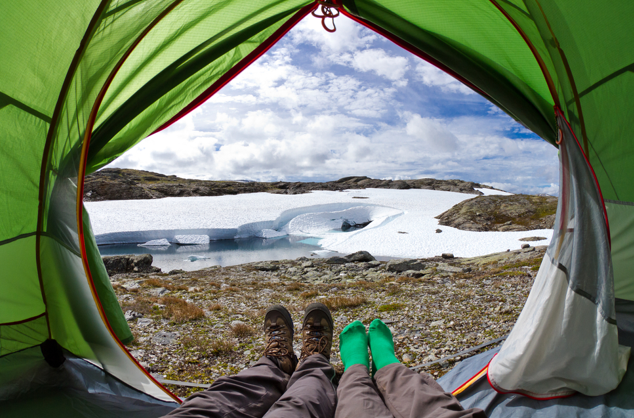Subscribe
Stay updated with our newsletter
Related Articles
Images provided by: depositphotos.com

Are you planning a camping trip in cold weather? If so, you'll need to make sure your tent is properly insulated, especially the floor. A cold tent floor can be very uncomfortable while trying to sleep at night, and it can even lead to health problems like hypothermia.
As a passionate camper, I know how crucial it is to have a good night's sleep while out in nature. And that's where tent floor insulation comes in.
In this article, we'll explore different ways to insulate your tent floor so you can rest easy and wake up ready to take on the day's adventures.
There are several reasons why tent floor insulation is important.
Are you planning a cold weather camping trip and looking to keep warm inside your tent? One of the most effective ways to stay warm is by insulating your tent floor. In this article, we'll discuss the different ways to insulate your tent floor and provide tips on how to do it.
If you're on a tight budget, DIY tent insulation is a great option. It involves using materials that you may already have at home, such as old blankets or comforters. You can also use foam floor tiles or yoga mats for insulation. To install, simply cut the material to fit the size of your tent floor and lay it down.
If you're looking for a more convenient option, pre-made tent floor insulation is the way to go. These insulation pads are designed to fit the shape of your tent and provide maximum warmth. They come in a variety of materials, including foam and synthetic fibers. Pre-made insulation pads are easy to install, simply lay them down on your tent floor.
Reflective insulation for tents is a great way to keep warm while camping. This type of insulation reflects heat back towards you, keeping you warm and toasty. Reflective insulation is made up of several layers of foil, air pockets, and polyethylene foam. To install, simply lay it down on your tent floor.
Bubble wrap tent insulation is a popular option for DIYers. It's lightweight, easy to install, and provides great insulation. Simply cut the bubble wrap to fit the size of your tent floor and lay it down. You can also use duct tape to keep the insulation in place.
Insulated tent footprints are another option for cold weather camping. They're designed to fit under your tent and provide a barrier between your tent and the ground. Insulated tent footprints come in a variety of materials, including foam and synthetic fibers. They're easy to install, simply lay them down under your tent.
When it comes to selecting insulation for your tent floor, there are several factors to consider. The type of insulation you choose will depend on your camping style, the climate you'll be camping in, and your budget.
Type of insulation
There are two main types of insulation: natural and synthetic. Natural insulation is made from materials like wool, down, and cotton. Synthetic insulation is made from materials like polyester, fiberglass, and cellulose.
Natural insulation is generally more expensive than synthetic insulation, but it is also more durable and long-lasting. Synthetic insulation is less expensive than natural insulation, but it is not as durable or long-lasting.
Thickness of insulation
The thickness of the insulation you choose will depend on the climate you'll be camping in. If you'll be camping in cold weather, you'll need thicker insulation. If you'll be camping in warm weather, you can get away with thinner insulation.
R-value
The R-value of insulation is a measure of its ability to resist heat flow. The higher the R-value, the better the insulation will be at keeping you warm.
For cold weather camping, you'll need insulation with an R-value of at least 5. If you'll be camping in extreme cold weather, you may need insulation with an R-value of 10 or more.
How to install and maintain your insulation
Once you've chosen the right insulation for your tent, you'll need to install it properly. The best way to install insulation is to follow the instructions that come with the insulation.
Once the insulation is installed, you'll need to maintain it to keep it in good condition. This means keeping it clean and free of debris. You may also need to replace the insulation every few years, depending on the type of insulation you choose.
Stay updated with our newsletter
Images provided by: depositphotos.com
As an Amazon Associate I earn from qualifying purchases.
We are a participant in the Amazon Services LLC Associates Program, an affiliate advertising program designed to provide a means for us to earn fees by linking to Amazon.com and affiliated sites.